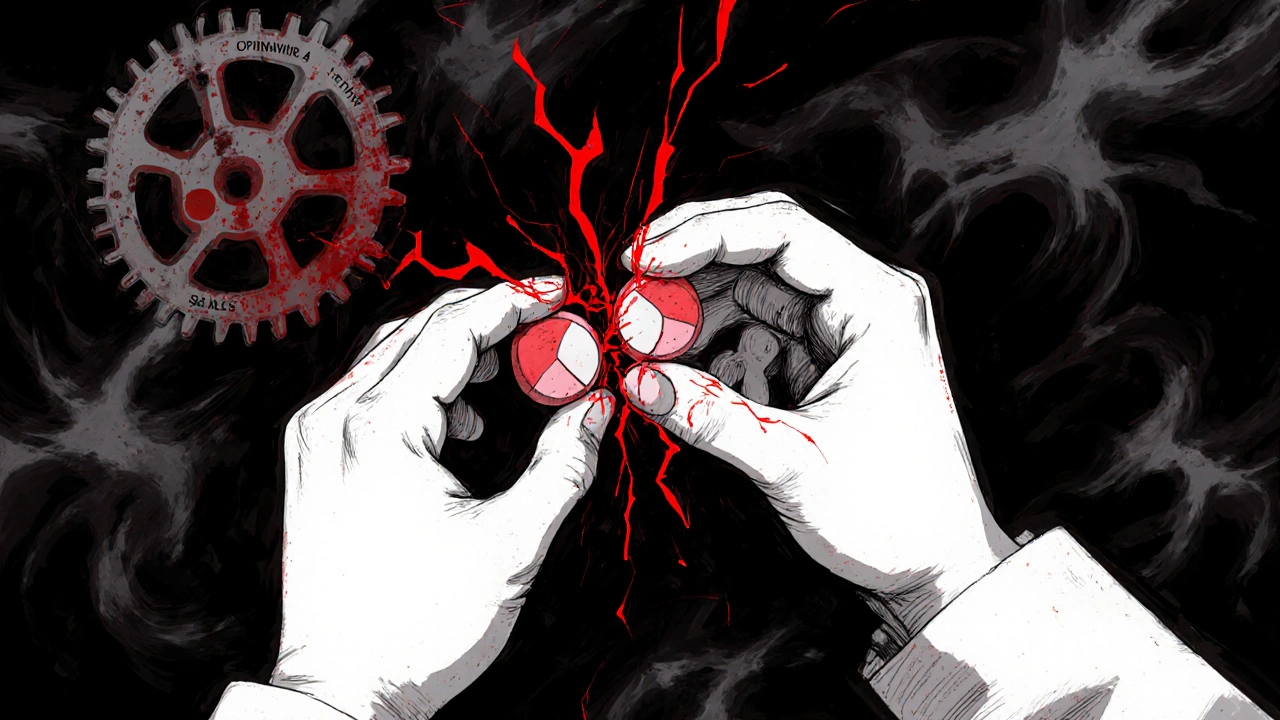Lopinavir/ritonavir boosting uses ritonavir to inhibit CYP3A4 and boost lopinavir levels, but this creates dangerous interactions with hundreds of common drugs. Learn how this HIV treatment can cause fatal side effects if interactions are missed.
HIV Treatment: What Works, What to Watch For, and How to Stay Safe
When it comes to HIV treatment, a combination of medications that suppress the virus and help the immune system recover. Also known as antiretroviral therapy, it’s no longer a death sentence—it’s a daily routine that lets people live long, healthy lives. Thanks to modern drugs, someone diagnosed with HIV today can expect to live nearly as long as someone without it, as long as they take their meds consistently.
There’s no cure yet, but antiretroviral therapy, a mix of drugs that block HIV from copying itself in the body. Also known as ART, it’s the backbone of every successful HIV plan. These drugs come in different classes—like NRTIs, NNRTIs, and integrase inhibitors—and doctors usually combine at least three to stop the virus from fighting back. You’ll often see them bundled into one pill, like Truvada or Biktarvy, so you don’t have to juggle a handful of pills every day.
But taking the meds is only half the battle. Side effects matter. Some people get nausea, headaches, or trouble sleeping at first. Others face long-term issues like weight gain, bone thinning, or kidney strain. That’s why knowing your options is key. For example, Lamivudine-Zidovudine, a two-drug combo used in early HIV treatment. Also known as Combivir, it’s cheaper but has more side effects than newer drugs. Then there’s Nevirapine, an older NNRTI that’s still used in some parts of the world because it’s affordable. Also known as Viramune, it can cause serious skin rashes or liver damage in some people. That’s why your doctor needs to pick the right mix for your body—not just your budget.
And it’s not just about the pills. You need to know how to refill them on time, what to do if you miss a dose, and how to avoid dangerous interactions with other meds or supplements. That’s why we’ve gathered real, practical guides here—everything from managing nausea from sertraline (yes, some HIV patients take it too) to spotting when a drug isn’t working. You’ll find comparisons of older drugs like Zidovudine with newer ones, tips on avoiding liver damage from HIV meds, and how to talk to your pharmacist about switching safely.
Some people worry about stigma or cost. Others just don’t know how to start. But the truth is, HIV treatment today is simpler, safer, and more effective than ever. The hard part isn’t the science—it’s staying consistent. That’s what these posts are for: clear, no-fluff advice on what to expect, what to watch for, and how to keep your treatment on track—no matter where you are in the journey.

